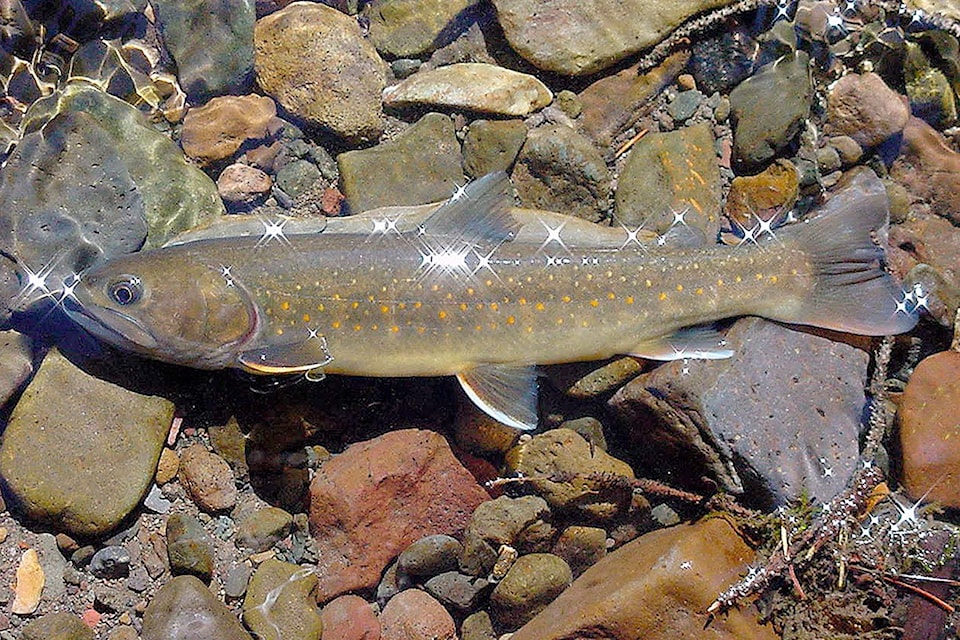This is the fifth in a series of columns addressing various issues surrounding climate disruption in the West Kootenay. Greg Utzig is a local Conservation Ecologist who has been working on climate change issues for two decades.
Water touches almost all aspects of our lives. We drink it for sustenance and it waters our forests and our food crops. Water provides rivers and lakes for fish and other aquatic life, wetlands for diverse wildlife, power for electricity and, yes, even a place to dump our waste. We swim in it when it’s liquid and ski on it when it’s frozen. We also fear water when it misbehaves – whether due to storms, flooding, drought, landslides or snow avalanches. Water is the basis for our economy and life in general.
Yet we often take it for granted. And especially by continuing to burn fossil fuels, we are threatening many of water’s benefits and increasing the frequency and magnitude of water-related calamities. Climate change is projected to have profound impacts on all aspects of the water cycle.
Most climate models project significant changes to seasonal precipitation patterns for the West Kootenay. Total annual precipitation will likely increase slightly, but that increase will not be evenly distributed. Summers will likely be drier and winters wetter. Rather than coming as gentle rains that nurture the garden, precipitation will likely fall more often as high intensity storms, with longer dry periods between precipitation events.
Lower elevations will begin to get more rain and less snow in the winter – potentially dropping from about 50 percent snow to 15 percent by the end of the century. This will create higher winter streamflows. While snow will still be dominant at higher elevations, avalanches may be less predictable and the snowpack will melt earlier in the spring creating earlier freshets.
As a result of that, and decreasing summer precipitation, summer/fall streamflows will drop. The water available for domestic use and irrigation will decrease, at the same time as higher summer temperatures increase the need for irrigation and cooling. Kokanee spawning may be threatened in some stream reaches that dry up in the fall. Small ponds, wetlands and shallow springs may run dry in drought years, affecting humans as well as amphibians and other wildlife.
Water in streams that are not fed by glaciers or groundwater will increase in temperature. As Kokanee Glacier and others disappear, streams fed by them will also begin to warm and decrease in flow. Retention of riparian forests will become even more critical for supplying shade to keep streams cool. Algae blooms may become more common in ponds and shallow bays where water temperatures reach critical levels.
Some streams will become unsuitable for cold-water dependent fish like bull trout. Invasive species like pike and bass may be favoured over native trout and salmonid species. As First Nations lobby for the return of salmon to the upper Columbia River, climate change is already having severe impacts on salmon returns in the lower Columbia. Some salmon returns in the US have already had more than 90 percent losses due to lethal stream temperatures. Climate projections show much of the lower Columbia may be unsuitable for salmon by the end of the century.
Climate disruption of the water cycle is beginning to have real local effects. Increased frequency and intensity of extreme precipitation events are already triggering more flooding, erosion and landslides. The 2012 Johnson’s Landing landslide was triggered by two extreme climate events – extreme monthly precipitation and rapid snowmelt. Rainfall saturated the soil from above and rapid snowmelt fed springs that further saturated the slide area from below. The result was a deadly landslide that killed four local residents.
In 2013 a rain-on-snow event flooded Calgary and created the most expensive “natural” disaster in Canadian history. It then continued moving west into the Kootenays creating further havoc. Raging debris floods destroyed numerous bridges in the East Kootenay. With over a month’s precipitation in two days at the north end of Kootenay Lake, residents lost their home at the mouth of Hamill Creek, a campground was destroyed on the Fry Creek fan, the highway was flooded at Schroeder Creek, and homes were narrowly spared at Campbell Creek. Shifting streamflow patterns create increased uncertainty for planners. Choice of culvert sizes for roads, restrictions for construction on floodplains and seasonal projections of hydro-electric production can no longer be based solely on historical data. Some of these impacts may also be amplified by other disturbances such as fire or logging.
The greenhouse gas emissions we have already put in the atmosphere guarantee that the types of impacts described here will be with us for at least a few decades. However, we still have an opportunity to contain the increase of these impacts if we stop burning fossil fuels now. But time is quickly running out.
On a positive note, a warmer Kootenay Lake will probably make swimming more enjoyable!
